
|   |

|   |
 e-mail: ukb7@rediffmail.com Dissolving borders Photos courtesy: ICCR Kolkata October 23, 2017 When Bangladesh Shilpakala Academy, the foremost cultural organization of that country, showcased recently their folk dance and music festival in New Delhi and Kolkata (Oct 12, 2017), there were high expectations of the treasure trove they would open and the cultural nuggets it would reveal. Their eminent folk-poet Abbasuddin Ahmed had written once, "Because all village people are simple, because they think simply, because their songs are simple, because their subject matter is simple, they talk of their simple joys and sorrows, and because people, the tune, the subject matter is simple - - all folk songs of the world are alike." This applies to folk dance as well. With the simplest of lyrics sung in unison, the Muslim womenfolk in Sylhet, Bangladesh, bond together and vent their pent-up emotions within the cloistered milieu of domestic marriage rituals in Dhamail song and dance. Moving in circles and clapping their hands to the musical rhythm, the leader sings first and then the others join the chorus: O the darling moon-faced one, do dance along..., exhorting the little bride to traipse, but not dare to lift her tiny feet from the floor lest she offends the elders! And even in the closed Islamic society, the women's lyrics characteristically invoke Krishna and Radha: Dance like Rai, and dance swaying like her beloved Kanai... In the river-studded land, melodies simply ripple along from shore to shore and anklets tinkle at the simplest of scattered homes. While the lonely boatswains sing of their despair in Bhatiyali, the oarsmen sing together in jubilant Sari. In the northern part, where the dusty, rugged, muddy roads take the place of rivers, bullock carts replace boats and Bhawaiya and Chatka take the place of Bhatiyali. Bicchedi is the song of separation. A wide spectrum of music, in the garb of Baul - composed by great mystic songsters like Hason Raja and Lalon Shah - is accompanied by Sufi-like movements by dancing minstrels in ecstasy. 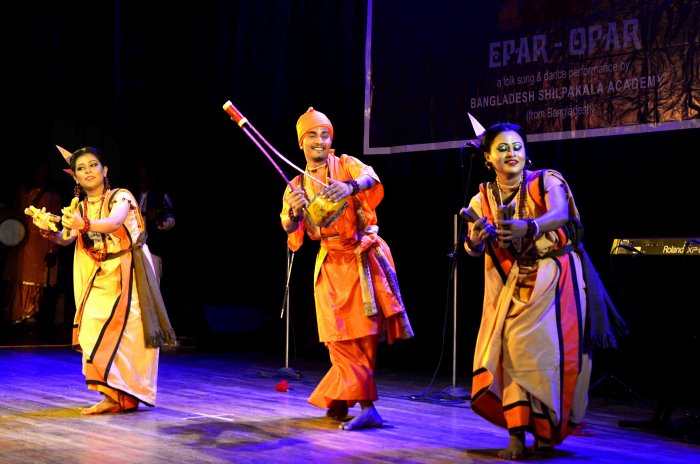
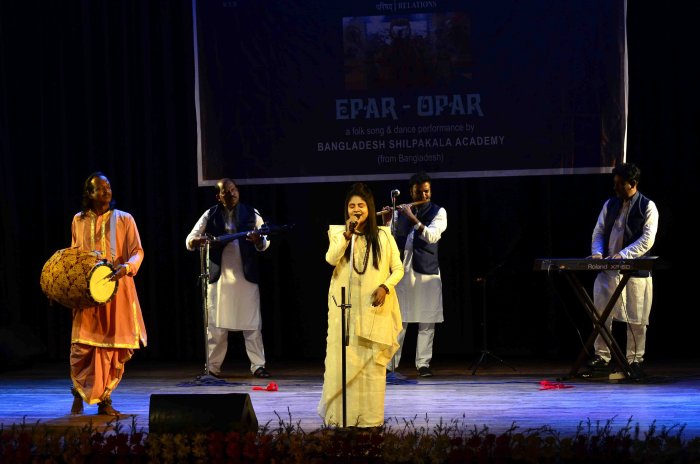
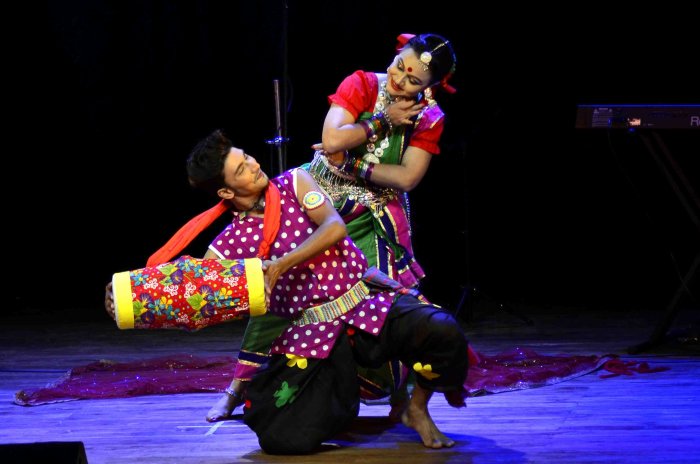
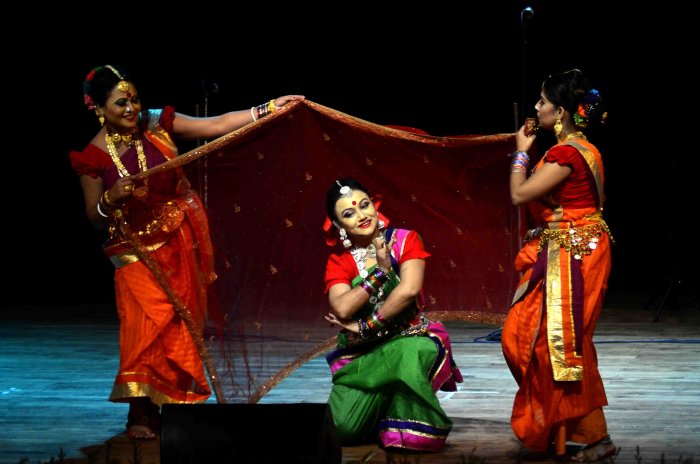
The spirituality of Bangladeshis is outpoured in Marfati and Murshidi songs as well. There are Kabi gaan (improvised verses) and Pala gaan (group singing under a lead singer) which keep the listeners spellbound for nights together in remote villages. And, of course, Bangladeshi marriages revel in the popular wedding ditties like: Play well the double-stringed drone, for the beautiful Kamala is astir dancing... In the dancers' domain, simplicity also reigns supreme. Dhali and Lathi - executed with cane shields and bamboo sticks - are quintessentially martial arts, while Chhokra, Ghatu and Khemta dances provide pure entertainment. Performed on a canopied stage in a mango grove, Chhokra is a dance by nubile boys - dressed as girls - and led by a sarkar with a large contingent of singers, musicians and players, complete with a clown. In Ghatu too, one or more teenage boys, dressed as girls, form the main attraction, with songs based on the Radha-Krishna episodes. One person sings while the others dance. Khemta dance accompanies Khemta songs: based again on stories of Radha and Krishna - - with drums and cymbals - mainly performed by the eunuchs, who have kept this folk form alive. On the religious front, Fakir Dance is performed by the followers of Madar Pir on the occasion of his Urs (demise). Long haired devotees, wearing ankle length loose garments, wield a bamboo: draped in red with a fly whisk on top and dedicated to the Pir as his symbol. One devotee carries the bamboo on his shoulder, while others follow him. All the devotees dance around a ritual fire, swaying heads to the beat of the music. Jari dance accompanies its own song and is performed by Shiah Muslims during Muharram, recounting the mournful death of Imam Hossain at Karbala. About 8-10 youths form a Jari dance group, with one ustad and others as dohars (accompaniment). The dohars wear everyday garments, tying red handkerchiefs round their wrists and brows, and move in a circle round the ustad, singing the refrain. The dancers express their grief by vigorous movements of their heads, hands and feet. Lathi dance too, figures prominently during Muharram, due to its martial overtones. Epar-Opar (This Border, That Border), presented by the Shilpakala Academy, was indeed a bonanza drawn from the land's rich folk dance and music repertoire. After the opening folk dance of three girls with a false drum: Sounds emanate in a cascade of rhythms..., Suraya Sakila Shukla sang soulfully two Lalon Fakir songs: I wonder how the unknown bird flits in and out from its cage... (symbolising soul's sojourn within the human body) and I wistfully await my union with my Creator...Her third song was from Hason Raja: Intoxication blinds my two eyes... (describing the ecstasy of meditation). 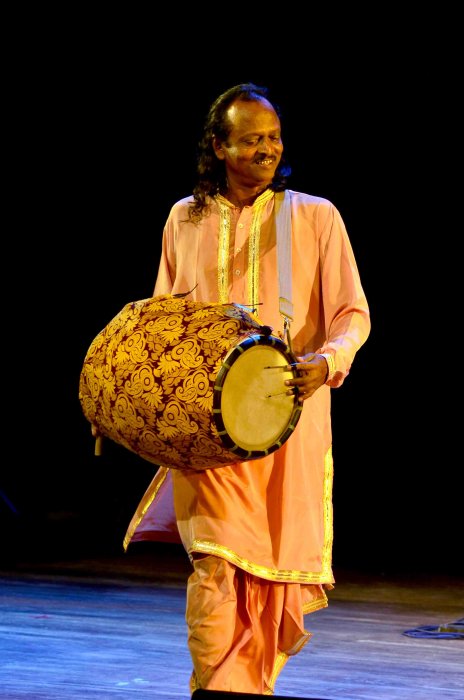
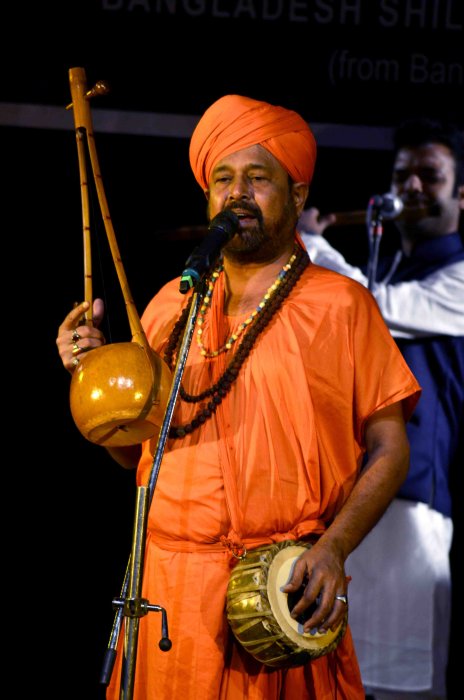
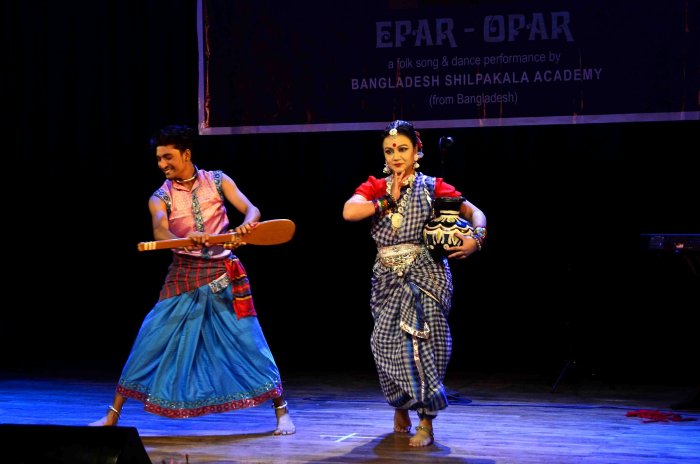
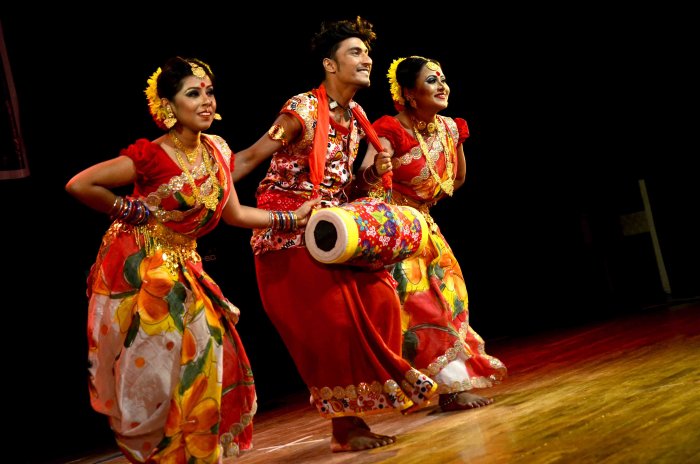
Two joyous bridal dances followed, first the perpetual favourite: O the darling moon-faced one... and then the despair of adorning a fully-bloomed girl: Lilabali Lilabali, the youthful dame, how do we drape you gorgeously?... The full orchestra - along with the very sonorous drum beats by Dasarathi Dhuli - played next a Hason Raja song; Who all are you who've made me a stoic... and an Abdul Karim Shah song of unity: How well did we spend days of yore, Hindus and Muslims huddling together...Then came a boy-and-girl duo dancing a boatman song: What a lovely boat we do ply... Kiranchandra Roy, a surprisingly complete artiste who sang his own compositions, took over with an open invitation: Do come and look us up in Bangladesh... and a most refreshing spiritual ditty: May I know your real name, my Lord, in this plethora of loose addresses.... His following song was a revelation how little is needed to make a poor man happy, when he sang: Allah has favoured this wretched one, go and tell my neighbours that I'm a boatman now and not oarsman any longer... He concluded with a very popular song he set tune to: Within me and without, in my heart of hearts, You reside pervading my entire being... The finale was a hugely patriotic folk song, sang and danced to by all participants: The Bangladesh drum beats on ceaselessly, I can forget everything but not the lap of my motherland... One remembers what was said by Professor G.H. Gerould, the famous folklorist of the contemporary world, "At the back of all culture and literature stretches the unmapped and immeasurable world of oral tradition." Kudos is due to Bangladesh Shilpakala Academy which is rendering a yeoman's service to keep alive the vast oral tradition of their folk culture.  Dr. Utpal K Banerjee is a scholar-commentator on performing arts over last four decades. He has authored 23 books on Indian art and culture, and 10 on Tagore studies. He served IGNCA as National Project Director, was a Tagore Research Scholar and is recipient of Padma Shri. Post your comments Please provide your name and email id when you use the Anonymous profile in the blog to post a comment. All appropriate comments posted with name & email id in the blog will also be featured in the site. |